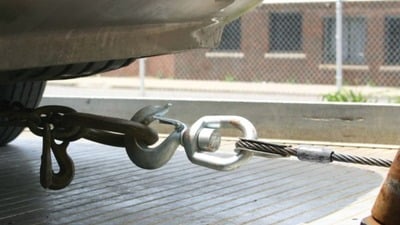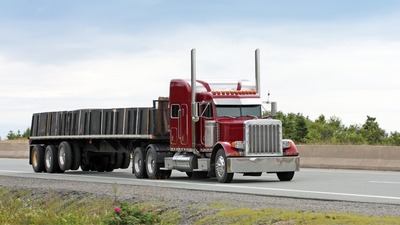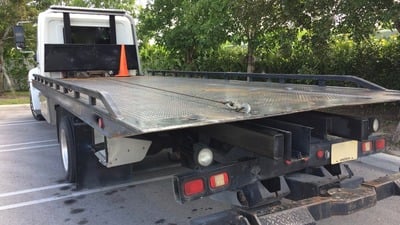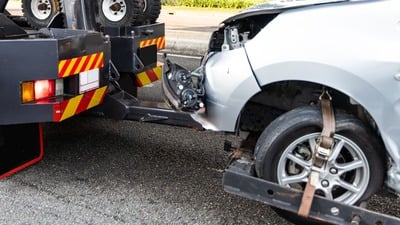Introduction to Winch Cables: Essentials for Your Towing Business
In the towing business, choosing the right winch cable is like selecting the right tool for a job. It's not just about buying something that works; it's about finding the perfect match that ensures safety, efficiency, and durability. Winch cables come in different materials and sizes, each with its strengths and weaknesses. Generally, you'll find cables made of steel or synthetic materials. Steel cables are tough, resistant to abrasion, and can handle heavy loads. However, they're also heavy, can rust, and might cause injury if they snap. On the flip side, synthetic ropes are lighter, safer to handle if they break, and easier to use. But, they wear out faster and are more sensitive to UV damage and chemicals. Picking the right cable isn't just a purchase; it's an investment in your business's future. Remember, the aim is to get jobs done safely and efficiently, not just to save a few bucks. So, consider what you're towing, where you're towing, and how often you're using the winch. This will guide you in making a choice that won't just fit your needs but exceed them.
Understanding Different Types of Winch Cables
When it comes to towing, the strength and reliability of your winch cable can make or break a job. There are mainly three types of winch cables to consider: steel, synthetic, and hybrid. Let’s break them down simply. Steel cables are the old reliable. Tough, resistant to abrasion, and cheaper, they are great for heavy-duty lifting. But, they're heavy, can rust, and if they snap, they can cause injury due to the whipping action. Synthetic cables come next. Lighter, safer, and easier to handle, these cables are kinder to your winch and your back. They won’t rust and are better for water or mud conditions. However, they are more susceptible to wear, UV damage, and abrasion, needing more babying than steel. Hybrid cables are a newer entry, aiming to offer the best of both worlds. They're not as common but are gaining traction for their versatility and balanced features. Choosing the right winch cable is crucial for safety and efficiency. Steel is your go-to for rigorous, everyday work. Synthetic is ideal for specific conditions and ease of use. And hybrid? It’s worth exploring if you’re after something in between. Always weigh the type of tasks you handle most often against these pros and cons to make the smartest choice for your towing business.
The Significance of Cable Length and Thickness
When picking winch cables for your towing business, don't overlook cable length and thickness—both crucial parts of the equation. Think of cable length like this: Too short, and you can't reach the vehicles you need to tow. Too long, and the cable becomes harder to manage and could tangle. Most pros go for a length that strikes a balance, offering enough reach without causing a headache during operation. Now, let's talk thickness. Thicker cables boast stronger pulling power. They're the muscle. But, they also weigh more and require a heavy-duty winch to handle them. Thinner cables, while lighter and easier to work with, may not hold up in tougher towing scenarios. So, choosing the thickness isn't just about what can pull the most—it's about matching your winch's capabilities and your typical towing needs. Remember, it's not just finding the strongest cable; it's about finding the right fit for your business.
Steel vs. Synthetic: Choosing the Right Material for Winch Cables
When it comes to winch cables for your towing business, it boils down to two key choices: steel and synthetic. Both have their champions and critics, but let's break it down so you can make the best decision for your needs. Steel cables are the old-timers of the winching world. They're tough, resistant to abrasion, and can handle heavy loads. Plus, if you're working in environments where there's a risk of the cable rubbing against sharp edges, steel is your friend. But, it's not all sunshine and rainbows. Steel cables are heavy, making them harder to handle, and they can rust over time, especially if you're operating in wet or salty conditions. And if a steel cable snaps? Stand back. The recoil can be dangerous. Then you’ve got synthetic cables. They're the new kids on the block but have quickly made a name for themselves. Lightweight and easier to handle than steel, synthetic cables are a favorite among many, especially for quick jobs. They float on water, won't rust, and if they break, the lack of recoil is a significant safety perk. The downside? Synthetic cables can wear out faster, especially if you're not careful about protecting them from sharp edges and UV exposure. So, steel or synthetic? If durability under harsh conditions and cost-effectiveness is your priority, steel might be your best bet. On the flip side, if ease of use, safety, and minimal maintenance sound appealing, synthetic could be the way to go. Remember, it's all about what fits your business’s specific needs.
How to Determine the Correct Winch Cable for Your Towing Needs
First, consider the weight of the vehicles you'll be towing. This is crucial. You're not going to use the same cable for a small sedan as you would for a heavy-duty truck. The cable's rating, listed as working load limit (WLL), will tell you how much weight it can handle. Don't guess. Overloading a cable could spell disaster. Next, think about cable length. Longer isn't always better. Get a cable too long, and you're wrestling with unnecessary bulk. Too short? You're out of reach. Aim for the sweet spot where you have just enough to reach and operate effectively. Material matters, too. Steel cables are tough. They stand up to rough conditions but watch out for rust and ensure they don't kink or fray. Synthetic cables, lighter and easier to handle, are good too but can be damaged by UV light and chemicals. Lastly, consider the hook and connector types. They need to be compatible with what you're towing and the winch itself. Wrong fittings? You're looking at a headache. Summing up, match the cable's weight limit to your needs, choose the right length, pick the best material for your situation, and ensure the connections fit. Stick to these steps, and you're set.
Safety Tips: Maintenance and Handling of Winch Cables
First off, remember, safety is key when dealing with winch cables. These cables can become your best friend or worst enemy if not handled and maintained properly. Start by regularly checking your cables for wear and tear. Look out for fraying, kinks, or any signs of rust. These are your red flags. Catching them early can save you a heap of trouble. Always wear gloves when handling cables. It's not just about getting your hands dirty; it's about preventing cuts and injures. Gloves are your first line of defense. Lubrication is your cable's best friend. It keeps the cable running smoothly and extends its lifespan. But don’t go pouring just any oil on them. Use the lubricant recommended by the manufacturer. It makes a difference. Never, and I mean never, overload your winch cable. Each cable has a breaking strength limit. Respect it. Overloading can lead to catastrophic failures, and trust me, you don’t want to be on the receiving end of a snapped cable. Lastly, if a cable shows significant wear or damage, replace it. Don't try to squeeze extra life out of it. It's not worth the risk. Safety first, always.
Installation Guide: Attaching New Winch Cables Correctly
When it's time to attach new winch cables, you want to make sure you're doing it right. Here’s a straightforward guide to get you through the process. First, safety always comes first. Before you start, ensure the winch is turned off and disconnected from any power source. Wear gloves to protect your hands from sharp cable strands. Now, let's get to it. Step 1: Remove the old cable. If your winch has a tensioner, you'll need to release it. Unwind the old cable, keeping clear of any potential snags. Step 2: Inspect the drum for damage. Before attaching the new cable, make sure the winch drum is in good shape. Look for any signs of wear or damage. If it's not smooth, it could damage your new cable. Step 3: Connect the new cable. Feed the end of the new cable into the anchor point on the drum. Make sure it's secured according to the manufacturer's instructions. This might involve using a set screw or clamp. Step 4: Wind the cable. Slowly wind the cable onto the drum, ensuring it lays down in neat, tight rows. This prevents the cable from pinching or catching, which can cause damage over time. Avoid touching the cable as it winds to keep tension even and your hands safe. Step 5: Reconnect and test. Once the cable is fully wound, reconnect any tensioners and power. Test the winch operation with a light load first to ensure everything is working as it should. Remember, the key to a successful winch cable installation is patience and attention to detail. Rushing can lead to mistakes, potentially damaging the cable or winch. Take your time, follow these steps, and your winch will be ready for action with its new cable on board.
Troubleshooting Common Issues with Winch Cables
When your winch cables give you trouble, know it's often something you can handle. First off, fraying is your number one enemy. It's both a safety hazard and a sign your cable's seen better days. If you spot any strands poking out, it's time for a replacement. Next up, rust and corrosion. This duo loves to eat away at your cables, especially if you’re working in wet or salty conditions. A bit of maintenance, like regular cleaning and applying a protective spray, can go a long way. Lastly, watch for kinks and twists. These are not just annoying; they weaken your cable over time. Each time you wind your winch, ensure it goes back evenly and without crossing over itself. Regular checks and maintenance keep these issues at bay and ensure your winch cable remains a reliable tool in your towing arsenal.
Conclusion: Making the Best Winch Cable Decision for Reliability and Efficiency
Choosing the right winch cable is not just a purchase; it's an investment in your towing business's efficiency and safety. By now, you know the drill. Whether it's steel cable for its unbeatable durability or synthetic rope for its lightweight and safer handling, the decision largely hinges on your specific needs and operational conditions. Remember, steel withstands abrasive environments but demands caution due to its potential danger if snapped. Synthetic, though softer on the hands and lighter, requires vigilant maintenance to prevent wear and tear. Don't let price dictate your choice. Cheap can mean frequent replacements and downtime. Think long term. A quality cable may cost more upfront but saves you money and headaches down the line. And always train your team. Proper use and regular inspection of the cable can make a world of difference in longevity and performance. So, weigh your options, consider the job at hand, and prioritize safety and reliability. That makes for not just a smart decision but the right one for your business's success.





